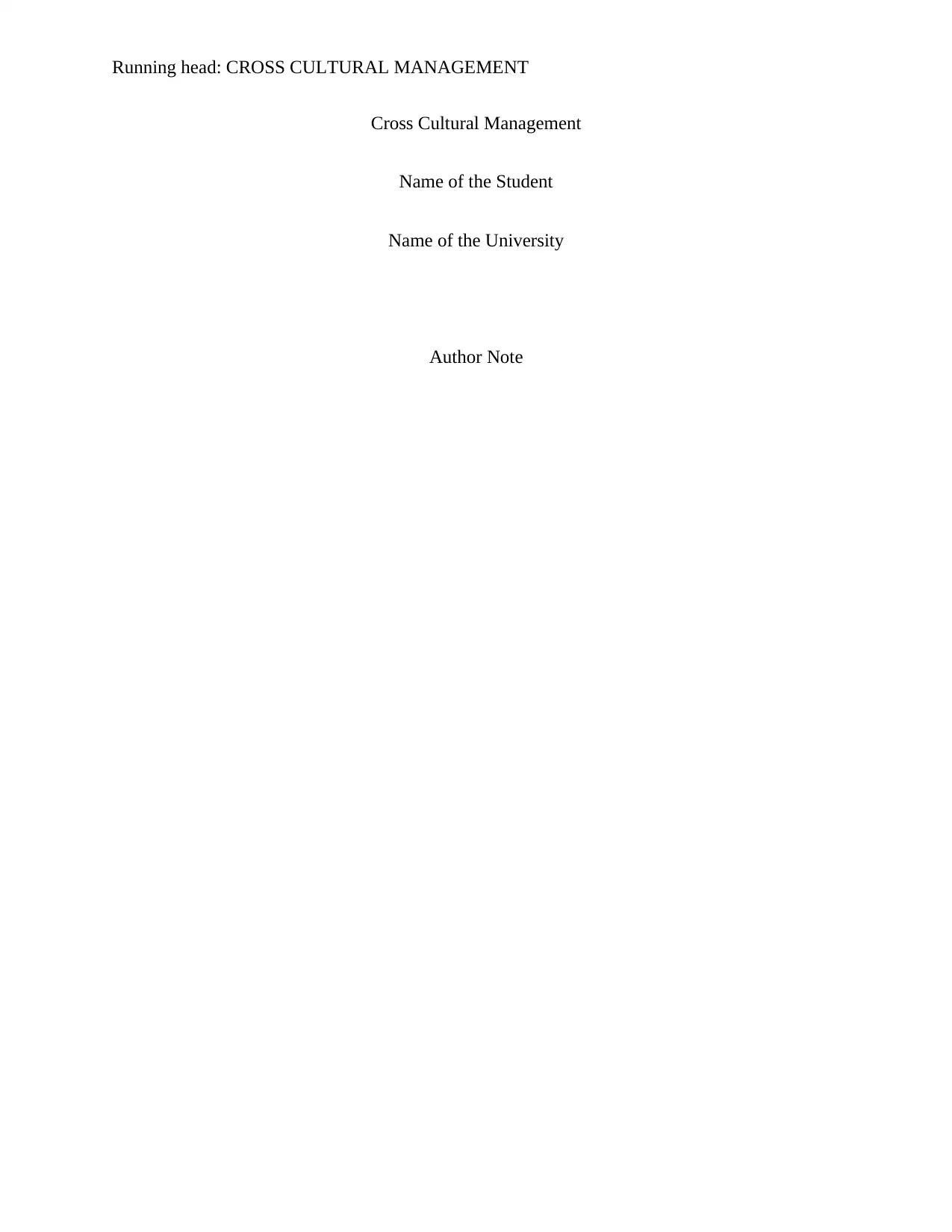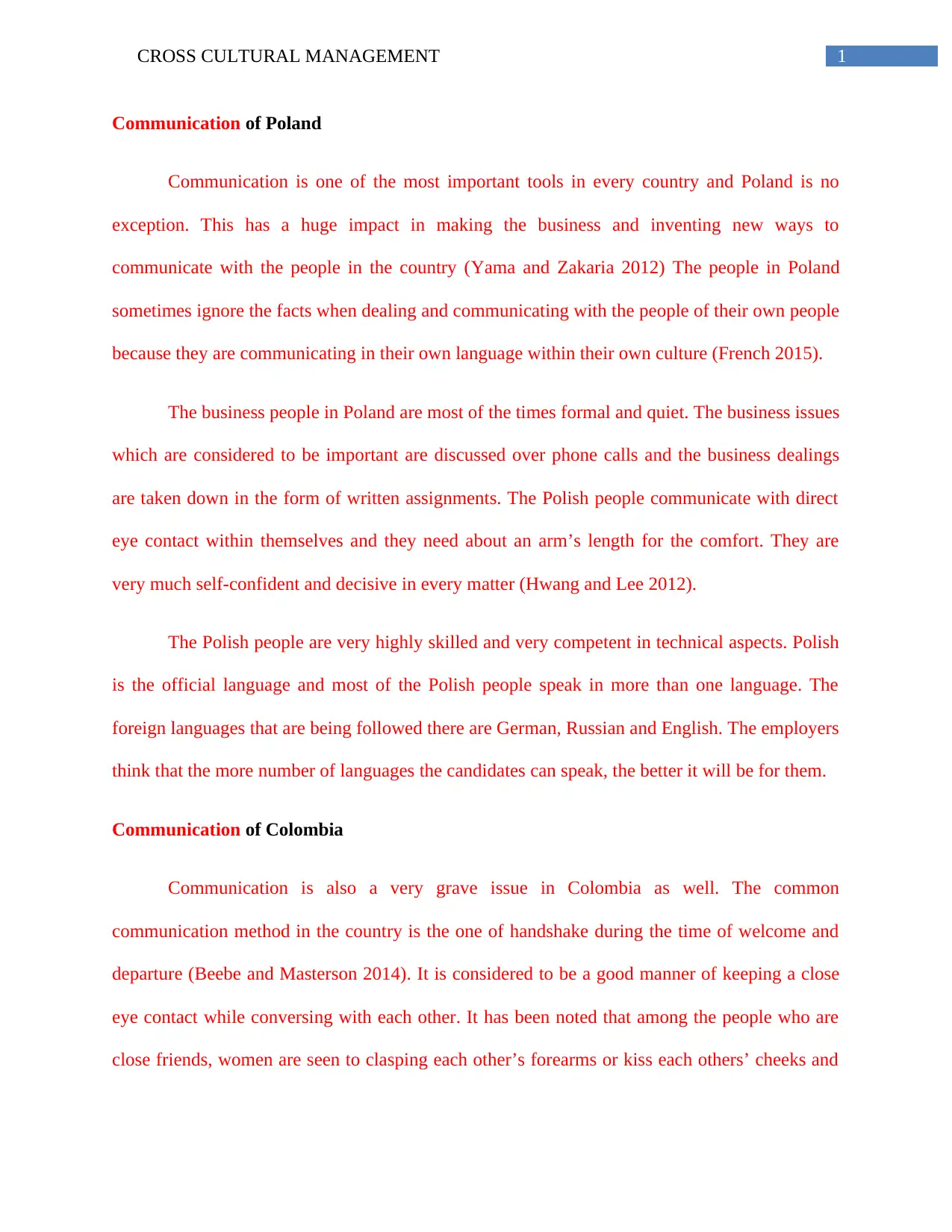Cross-Cultural Management Report: Poland and Colombia Analysis
VerifiedAdded on 2020/03/23
|4
|646
|364
Report
AI Summary
This report offers a comparative analysis of cross-cultural management, focusing on communication styles and business practices in Poland and Colombia. It begins by examining Polish communication, highlighting the importance of direct communication, formal business interactions, and the significance of language proficiency, with a focus on the use of multiple languages like Polish, German, Russian, and English. The report then shifts its focus to Colombia, detailing the significance of physical gestures such as handshakes, maintaining direct eye contact, and the use of the 'abrazo'. The report also touches on the cultural aspects such as punctuality and the importance of personal well-being in communication. The analysis provides insights into how cultural norms affect business communication, including decision-making processes and the importance of emotional intelligence in business interactions. The report concludes by emphasizing the need for understanding these differences to effectively manage cross-cultural interactions. References are provided to support the findings.
1 out of 4







![[object Object]](/_next/static/media/star-bottom.7253800d.svg)